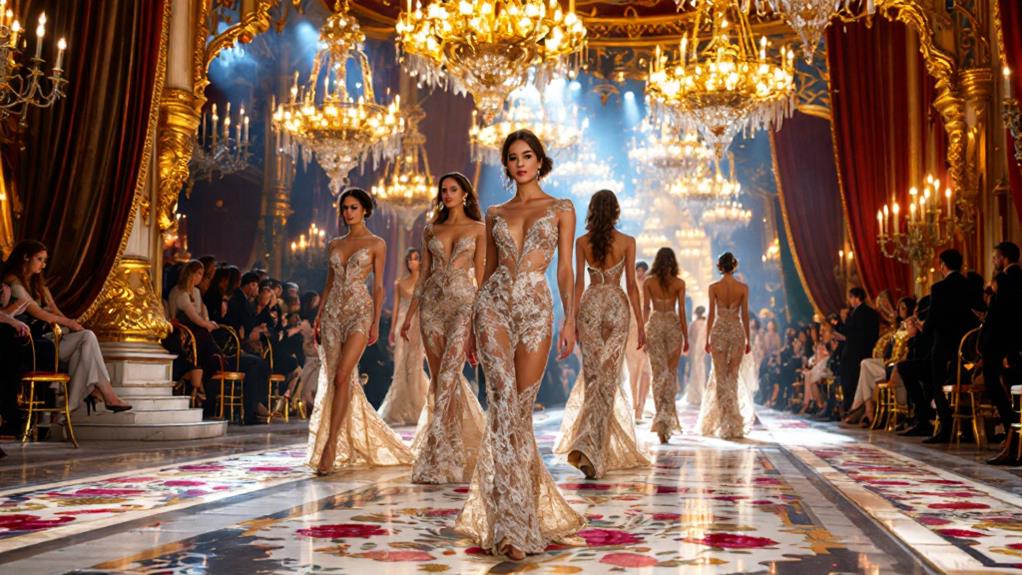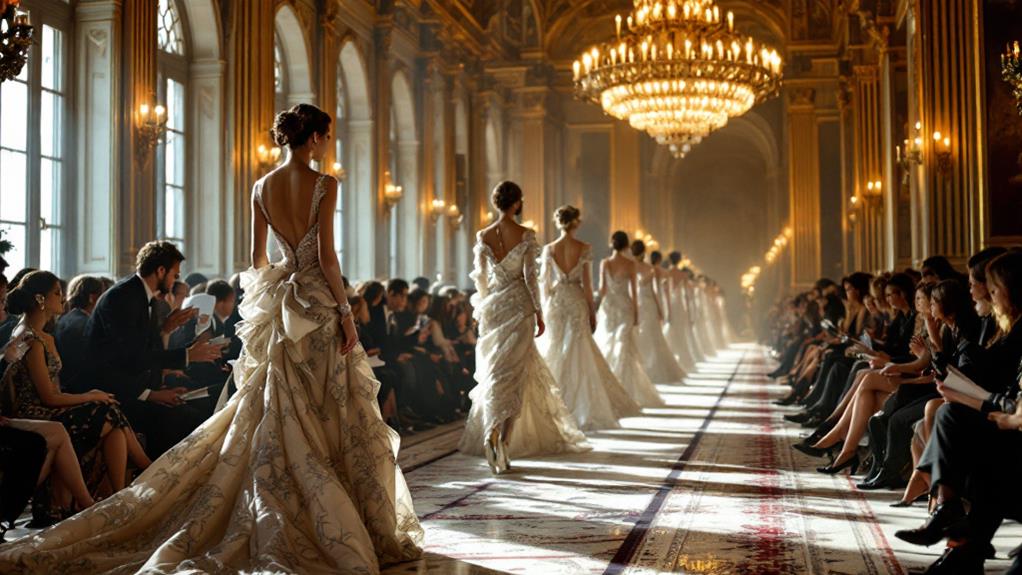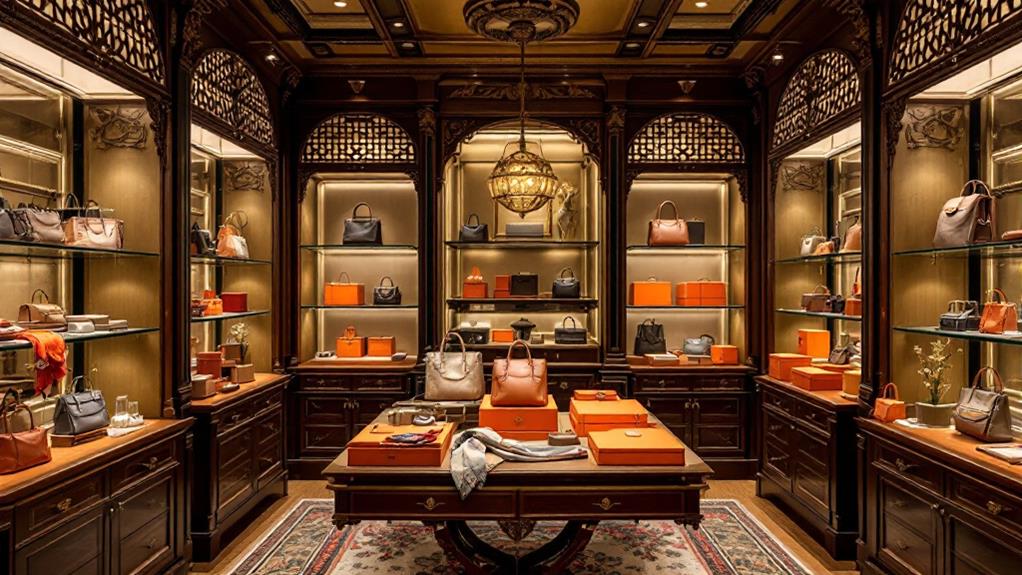Luxury Fashion Brand: The Story of Ralph Lauren
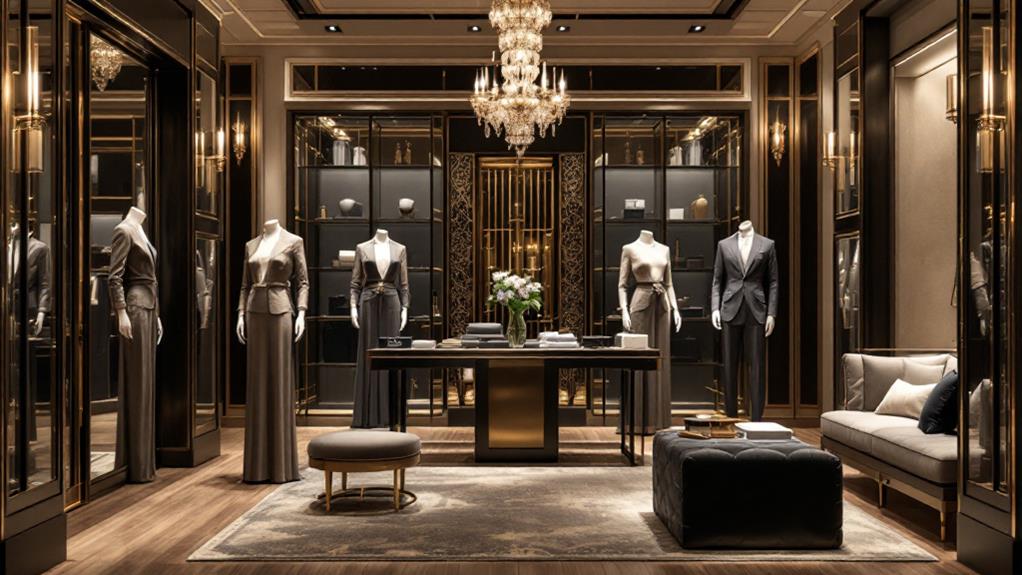
You're about to uncover Ralph Lauren's expedition from modest beginnings in the Bronx to becoming a global luxury fashion icon. It all started in 1967 with a simple necktie collection under the "Polo" brand, reflecting American sophistication. By introducing unique designs like the polo shirt and the iconic polo player logo, Ralph Lauren captivated the fashion world. The brand expanded internationally in the 1980s, pursuing innovation and philanthropy with initiatives like the Pink Pony. Not only celebrated for design excellence, Ralph Lauren stands out for cultural impact and strategic alliances. There's so much more to reveal about this inspiring story.
Brand Origins
Although Ralph Lauren's expedition began in the lively streets of the Bronx, New York, his fashion empire took off from a simple necktie collection in 1967. Starting from a drawer in the Empire State Building, Ralph Lauren's ambitious fashion career quickly gained momentum. He chose the brand name "Polo" to embody American heritage and sophistication—concepts that would define his legacy in luxury fashion. The necktie collection laid the groundwork for his initial full menswear collection in 1968, featuring groundbreaking designs like a white flannel suit and dress shirts crafted from sport shirt fabrics.
These bold choices set Ralph Lauren apart in the fashion world, establishing a unique aesthetic that combined elegance with a casual flair. The introduction of the iconic polo player logo in 1971 marked another crucial moment. This symbol became synonymous with the brand, especially after it appeared on the initial collection of polo shirts in 1972, epitomizing the preppy style. By 1970, Ralph Lauren made a historic retail impact by opening his first shop in Bloomingdale's, a boutique that was the first of its kind dedicated to a single designer. This move solidified Ralph Lauren's standing in luxury fashion.
Ralph Lauren's Early Years
Ralph Lauren's adventure began in the Bronx, New York City, when he was born Ralph Lifshitz on October 14, 1939, to Polish immigrant parents. Growing up in a lively city environment, Ralph faced challenges but remained resilient. At 16, he made the bold decision to change his last name from Lifshitz to Lauren to avoid school bullying. This change marked the beginning of a transformative expedition.
You'd find Ralph at DeWitt Clinton High School, where he graduated in 1957. His interest in style and design piqued during these formative years. Ralph briefly attended Baruch College to study business, but his passion for fashion outweighed academic pursuits, leading him to drop out.
After serving in the U.S. Army from 1962 to 1964, Ralph initiated his fashion career. He worked at Brooks Brothers, absorbing valuable insights into the industry. His tenure at Rivetz further fueled his aspirations. In 1967, he founded The Ralph Lauren Corporation, focusing initially on men's ties. This venture laid the groundwork for his future success, transforming him from Ralph Lifshitz of the Bronx into a fashion icon. His early years were crucial, shaping his enduring legacy in the fashion world.
Rise of the Polo Brand
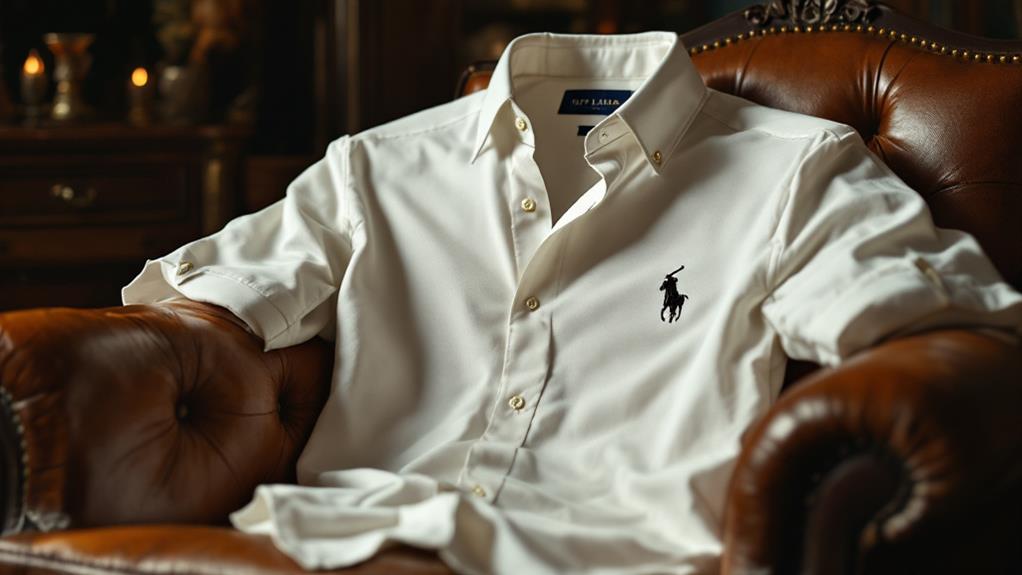
The rise of the Polo brand began in 1967 when Ralph Lauren launched his necktie collection under the brand name "Polo" from a modest space in the Empire State Building. This groundbreaking move marked the inception of a fashion empire that would soon captivate the world. Just a year later, in 1968, Ralph Lauren introduced his initial full menswear collection, blending tailored elegance with a dash of American sportswear. This unique combination defined the Polo Ralph Lauren brand.
In 1971, the iconic polo player logo made its debut, becoming a recognizable symbol of the luxury brand. The logo, a simple yet powerful image, quickly became synonymous with quality and style. Then, in 1972, the Polo shirt was launched, and it didn't take long for it to become a cultural emblem of preppy style and American fashion.
Here's how the brand's rise unfolded:
- 1967: Necktie collection launched in the Empire State Building.
- 1968: Initial full menswear collection introduced.
- 1971: Iconic polo player logo revealed.
- 1981: Initial international store opened in London, showcasing the brand's global appeal.
Ralph Lauren's vision transformed Polo into an enduring symbol of luxury and style.
Expansion and Innovation
Building on the momentum from its early successes, Polo Ralph Lauren expanded its horizons beyond American borders in 1981 with the opening of its initial international store in London. This bold move marked the brand's commitment to becoming a global name in luxury fashion. The Polo shirt, introduced in 1972, had already cemented Ralph Lauren as a symbol of preppy American style, paving the way for international appeal.
Ralph Lauren's expedition didn't stop there. In 1997, the company went public, becoming the largest clothing brand on the New York Stock Exchange. Ralph Lauren retained approximately 73% of the shares, demonstrating his tight control and dedication to the brand's vision. The introduction of the Polo Bear in 1991 and Polo Sport in 1994 showcased the brand's innovation and market adaptability, offering a blend of creativity and tradition.
In 2022, Ralph Lauren's collaboration with Fortnite exemplified its forward-thinking approach, integrating fashion with technology and virtual experiences. This move not only underscored the brand's adaptability but also highlighted its commitment to staying relevant in contemporary culture. Through strategic expansion and innovation, Ralph Lauren continues to redefine luxury fashion on a global scale.
Cultural Impact and Recognition
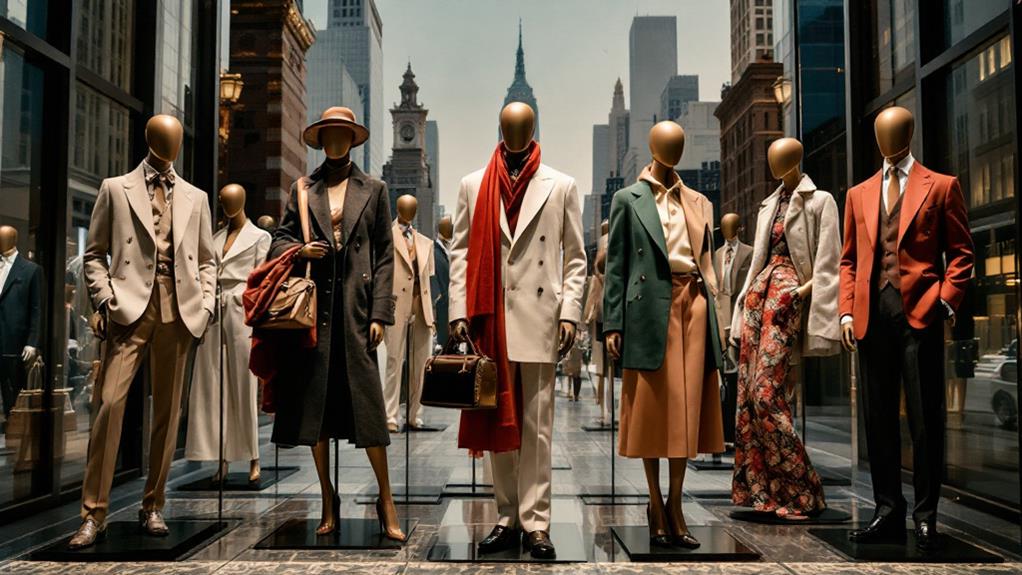
From the silver screen to the pages of Time magazine, Ralph Lauren's cultural impact has been both profound and multifaceted. His designs initially gained iconic status through the 1974 film "The Great Gatsby," cementing his influence in both American fashion and film culture. Diane Keaton's unforgettable style in the 1977 film "Annie Hall" further propelled Ralph Lauren into the fashion stratosphere, showcasing his talent for blending classic elegance with modern sensibility.
Here's how Ralph Lauren has left an indelible mark:
- Film and Fashion: His involvement in "The Great Gatsby" and "Annie Hall" linked his brand to cinematic history.
- Home Collection Pioneer: In 1983, he became the primary designer to introduce a home collection, merging fashion with home decor.
- Retail Innovation: The flagship store in New York City, highlighted by Time magazine in 1986, redefined retail experiences in the fashion industry.
- Philanthropy: Co-founding the Nina Hyde Center for Breast Cancer Research and the Polo Ralph Lauren Foundation showcases his philanthropic efforts.
Ralph Lauren's designer recognition goes beyond garments, influencing lifestyle and societal contributions, making him a stalwart in American fashion and beyond.
Awards and Honors
Ralph Lauren's odyssey through the fashion world has been punctuated by significant awards and honors that celebrate his enduring impact. In 1970, he received the prestigious Coty Award for menswear, a reflection of his groundbreaking style and vision. By 1973, he became a two-time winner, solidifying his status in the fashion industry. Three years later, his incredible contributions as a designer earned him induction into the Coty Hall of Fame for Menswear.
Lauren's influence didn't stop there. In 1992, he was honored with the CFDA Lifetime Achievement Award, presented by none other than Audrey Hepburn. This award recognized his crucial role in shaping American fashion. His international acclaim continued to grow, and in 2010, France awarded him the Chevalier de la Légion d'Honneur for his outstanding contributions to design.
His global impact was further acknowledged in 2019 when he was named an Honorary Knight Commander of the Most Excellent Order of the British Empire. Beyond fashion, his humanitarian leadership and unique experiences, like dining at his Polo Bar, continue to inspire. Ralph Lauren's legacy is defined by these accolades, reflecting his profound influence on fashion and culture.
Philanthropy and Partnerships
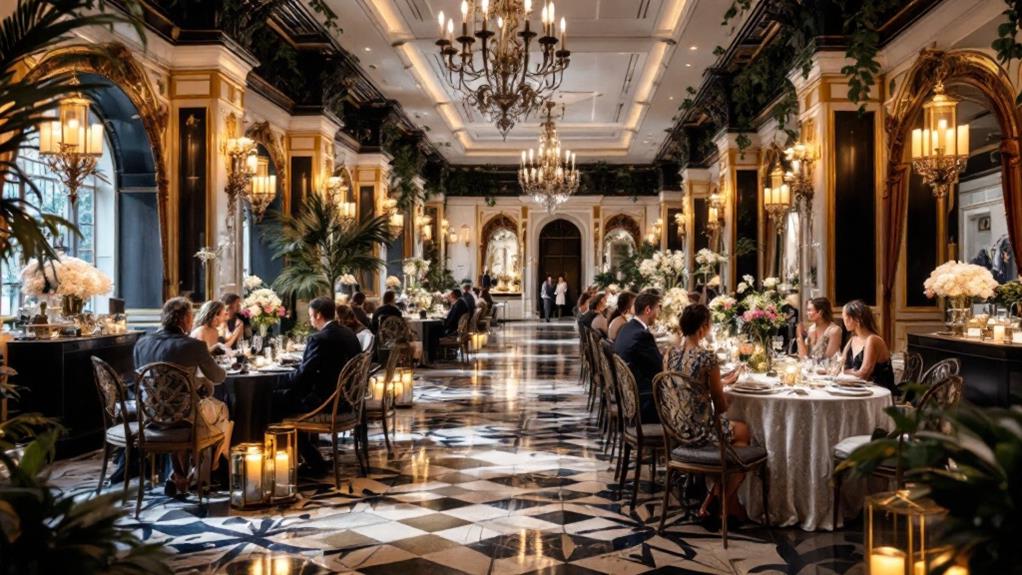
Often, Ralph Lauren's commitment to philanthropy and strategic partnerships has amplified his influence beyond the fashion industry. His efforts have touched diverse sectors, especially in promoting cancer awareness and care. Here's how:
- Pink Pony Initiative (2000): Ralph Lauren launched this collection to support cancer research and awareness, addressing health disparities in underserved communities. It's more than fashion; it's a declaration of solidarity.
- Ralph Lauren Center for Cancer Care (2003): Located in East Harlem, this center provides thorough cancer care services, ensuring that those in need receive attention and support. It's a reflection of Lauren's dedication to accessible healthcare.
- Nina Hyde Center for Breast Cancer Research (1989): Co-founding this center underscores Ralph Lauren's long-standing commitment to cancer research, highlighting his proactive role in the fight against cancer.
- Partnership with Wimbledon (2006): By designing official sports attire, Ralph Lauren bridged fashion and sports, showcasing his brand's versatility and expanding its reach.
Additionally, Ralph Lauren's 2022 partnership with Fortnite showcased his adaptability, blending fashion with gaming to engage a younger audience. His strategic partnerships and philanthropy continue to leave a lasting impact, reaching far beyond traditional fashion boundaries.
Legacy and Future Outlook
A legacy of timeless elegance and innovation defines Ralph Lauren's impact on the fashion industry. As a global fashion powerhouse, Polo Ralph Lauren has captivated audiences with its commitment to quality and classic style. You've seen this brand effortlessly adapt to changing trends while holding firm to its core identity, ensuring it remains relevant in the ever-changing world of luxury fashion. Ralph Lauren's cultural significance was vividly displayed during its 50th anniversary celebration in Central Park, marking a milestone that celebrated rich heritage while looking towards future growth.
Ralph Lauren doesn't just rest on its laurels; it pioneers new paths. The brand's forward-thinking approach is evident in innovations like the advanced heating system integrated into the 2018 Olympic parka, proving it can marry technology with style. By embracing collaborations and expanding product lines, Ralph Lauren positions itself for sustained impact, ensuring its legacy continues to thrive.
Looking ahead, Ralph Lauren is set on a trajectory of sustainable impact and classic style. You can expect this brand to keep redefining luxury fashion, securing its place not just in your wardrobe, but in the ongoing narrative of global fashion.

